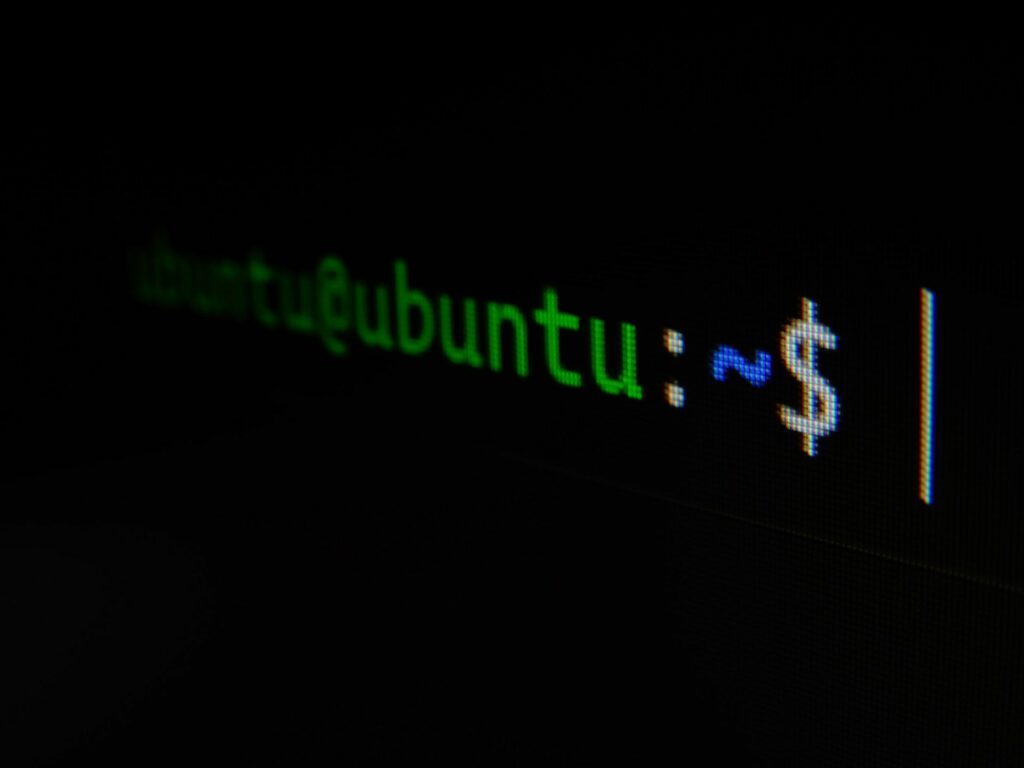“The AI and Cybersecurity Handbook – Past the Hype and Onto the ROI from freeCodeCamp.org” is an informative article that explores the intersection of artificial intelligence (AI) and cybersecurity. Written by Sonya Moisset, the handbook dives into the practical applications of AI in the field of cybersecurity and emphasizes the importance of moving beyond the hype to focus on the return on investment (ROI) that AI can bring to organizations. With expert insights and real-world examples, this handbook provides a comprehensive overview of how AI can enhance cybersecurity measures, making it essential reading for professionals in the industry.
The AI and Cybersecurity Handbook – Past the Hype and Onto the ROI

Introduction to AI and Cybersecurity
Artificial Intelligence (AI) has gained significant attention in recent years, with its potential applications in various industries, including cybersecurity. AI refers to the development of computer systems that can perform tasks normally requiring human intelligence, such as speech recognition, decision-making, and problem-solving. In the cybersecurity field, AI is being leveraged to enhance threat detection, network security, data security, incident response, and more. However, amidst the hype around AI, it is crucial to separate fact from fiction and understand its real potential in cybersecurity.
Understanding the Hype and Expectations
As with any emerging technology, AI is often subject to hype and unrealistic expectations. Many companies and individuals believe that AI will solve all cybersecurity problems, making human intervention unnecessary. However, it is important to recognize that AI is not a magic bullet solution. While it can enhance cybersecurity defenses, it is not infallible and has its limitations. It is essential to understand the capabilities and constraints of AI to set realistic expectations and avoid disappointment.
The Reality of AI in Cybersecurity
AI has certainly made advancements in the cybersecurity domain, enabling organizations to detect and respond to increasingly sophisticated cyber threats. AI-powered systems can analyze vast amounts of data, identify patterns, and detect anomalies that may indicate potential security breaches. They can also automate certain tasks, improving efficiency and allowing security teams to focus on higher-level strategic activities. However, AI is not a standalone solution but rather a tool that enhances existing cybersecurity measures. It should be integrated into a comprehensive cybersecurity strategy and used in conjunction with other technologies and human expertise.
Measuring the ROI of AI in Cybersecurity
When considering the adoption of AI in cybersecurity, organizations need to evaluate the return on investment (ROI) it can provide. ROI in cybersecurity refers to the value gained from implementing AI in terms of cost savings, improved incident response, reduced downtime, enhanced threat detection, and more. Measuring ROI requires defining key performance indicators (KPIs), quantitatively and qualitatively assessing the impact of AI, calculating cost savings, evaluating incident response efficiency, and determining overall effectiveness. Understanding the ROI of AI in cybersecurity is crucial for making informed decisions about its adoption.

The Role of AI in Cybersecurity
AI as a Tool for Threat Detection
AI-powered threat detection systems can analyze vast amounts of data, including network logs, user behavior, and system activity, to identify patterns and anomalies that may indicate potential security threats. Machine learning algorithms can continuously learn and adapt to evolving threats, improving detection accuracy and reducing false positives. AI can also assist in identifying previously unknown threats and help security teams respond proactively.
AI in Network Security
Network security is a critical aspect of cybersecurity, and AI can play a significant role in enhancing it. AI-powered network security systems can monitor network traffic in real-time, identify suspicious activities, and detect unauthorized access attempts. Through machine learning algorithms, AI can analyze patterns in network traffic data and identify potential threats, such as malware infections or malicious network activity. This can enable organizations to respond quickly and mitigate potential risks.
AI in Endpoint Security
Endpoints, such as laptops, desktops, and mobile devices, are often targeted by cybercriminals seeking access to sensitive information or control over systems. AI can aid in endpoint security by detecting and preventing malware infections, identifying unusual behaviors on endpoints, and implementing proactive measures to protect against emerging threats. AI-powered endpoint security solutions can continuously monitor devices, detect threats, and provide real-time alerts, allowing organizations to respond effectively.
AI in Data Security
Data security is a top concern for organizations, given the increasing volume of sensitive data being generated and stored. AI can play a crucial role in data security by analyzing data access patterns, detecting anomalous behavior, and identifying potential data breaches. Machine learning algorithms can learn from historical data access patterns and flag deviations that may indicate unauthorized access attempts. This can help organizations prevent data breaches and protect sensitive information.
AI in Incident Response
In the event of a cybersecurity incident, timely and effective response is crucial to minimize damage and mitigate potential risks. AI can assist in incident response by automating certain tasks, such as log analysis, threat intelligence gathering, and incident triaging. By leveraging AI-powered tools, organizations can accelerate the response process, improve decision-making, and reduce the time required to contain and resolve incidents.
Challenges and Limitations of AI in Cybersecurity
Data Quality and Availability
The effectiveness of AI in cybersecurity relies heavily on the quality and availability of data. AI algorithms require large volumes of high-quality data to train and learn from. However, cybersecurity data is often sparse, incomplete, and noisy, making it challenging to develop accurate AI models. Data sharing and collaboration among organizations can help address this challenge by pooling resources and creating more comprehensive datasets.
Bias and Discrimination
AI algorithms trained on biased or discriminatory data can perpetuate and amplify existing biases, leading to unfair outcomes. In the context of cybersecurity, biased AI models may disproportionately flag certain individuals or groups as potential threats, resulting in discriminatory practices. It is essential to ensure that AI systems are trained on diverse and representative datasets, and rigorous testing and evaluation are conducted to identify and mitigate biases.
Adversarial Attacks
Adversarial attacks refer to deliberate attempts to manipulate or deceive AI systems by exploiting vulnerabilities. In the cybersecurity domain, attackers may employ techniques to trick AI-powered systems into misclassifying data or evading detection. Adversarial attacks can undermine the effectiveness of AI in cybersecurity, requiring organizations to implement robust defense mechanisms, such as adversarial training and anomaly detection, to detect and defend against such attacks.
Lack of Explainability
One of the challenges associated with AI in cybersecurity is the lack of explainability. AI algorithms, particularly those based on deep learning and neural networks, often operate as black boxes, making it challenging to understand how they arrive at their decisions. This lack of transparency can raise concerns regarding accountability and trust. Efforts are being made to develop explainable AI models and techniques that provide insights into the decision-making process of AI systems.
Ethical Considerations
The use of AI in cybersecurity raises ethical considerations that must be addressed. Organizations need to ensure that AI systems are designed and implemented in a manner compatible with ethical principles, such as privacy, fairness, and transparency. They should adhere to established frameworks and guidelines for responsible AI use, conduct regular ethical reviews, and engage in ongoing dialogue with stakeholders to address emerging ethical challenges.

AI Adoption in the Cybersecurity Industry
Current State of AI Adoption
The adoption of AI in the cybersecurity industry is growing steadily. Many organizations are recognizing the potential of AI-powered solutions in enhancing their cybersecurity posture. According to a survey conducted by Capgemini, 69% of cybersecurity professionals believe that AI technology has the potential to improve their organization’s security posture. The market for AI in cybersecurity is also witnessing significant growth, with an increasing number of AI startups and established cybersecurity vendors offering AI-powered solutions.
Benefits and Drawbacks of AI Adoption
The adoption of AI in cybersecurity offers several benefits. AI-powered systems can enhance threat detection, automate tasks, reduce response times, and improve overall cybersecurity effectiveness. They can handle vast amounts of data, identify patterns and anomalies, and provide real-time alerts, enabling security teams to respond proactively. However, there are also drawbacks to AI adoption, such as the high cost of implementation, the need for skilled AI professionals, and the potential for false positives and false negatives.
Barriers to AI Adoption
Despite the potential benefits, there are several barriers to the widespread adoption of AI in cybersecurity. One of the key barriers is the lack of awareness and understanding of AI technology among cybersecurity professionals. Many organizations also face challenges in integrating AI solutions into their existing cybersecurity infrastructure. Additionally, regulatory and compliance concerns, such as data protection regulations, may pose hurdles to AI adoption. Addressing these barriers requires education and training, collaboration between cybersecurity and AI professionals, and a supportive regulatory environment.
Successful Use Cases of AI in Cybersecurity
There have been several successful use cases of AI in cybersecurity, demonstrating its potential and effectiveness. For example, AI-powered systems have been employed to detect sophisticated malware, analyze security logs for threat hunting, and automate incident response processes. AI algorithms have also been utilized to identify patterns of fraudulent activities, detect phishing attempts, and protect against insider threats. These successful use cases highlight the value that AI can bring to cybersecurity when appropriately implemented.
Key Considerations for Implementing AI in Cybersecurity
Identifying the Right Use Cases
Before implementing AI in cybersecurity, organizations need to identify the right use cases that align with their specific needs and goals. It is essential to assess the existing cybersecurity challenges and determine how AI can effectively address them. Identifying the right use cases helps in avoiding unnecessary investments and ensuring that AI is applied where it can provide the most significant impact.
Data Preparation and Integration
To leverage the power of AI, organizations must ensure that data is properly prepared and integrated into AI systems. This involves collecting relevant and high-quality data, cleaning and preprocessing it, and integrating it into AI models. Data preparation also includes addressing data privacy and protection concerns to comply with regulations and ethical considerations. Organizations should establish robust data governance practices and implement appropriate security measures to protect sensitive data.
Choosing the Right AI Techniques
There are various AI techniques that can be applied in cybersecurity, such as machine learning, deep learning, natural language processing, and anomaly detection. Organizations need to evaluate the suitability of different AI techniques based on their specific use cases and data availability. It is crucial to select the right AI techniques that align with the organization’s goals, resources, and expertise.
Addressing Ethical and Legal Concerns
The implementation of AI in cybersecurity should be guided by ethical principles and legal requirements. Organizations need to ensure that AI systems respect privacy, fairness, and transparency, and comply with relevant regulations, such as data protection laws. Transparent governance frameworks should be established to monitor and control the use of AI, and mechanisms should be in place to address ethical concerns and user feedback.
Ensuring Transparency and Explainability
To gain trust and promote widespread adoption of AI in cybersecurity, it is crucial to ensure transparency and explainability in AI systems. Organizations should strive to develop AI models and techniques that provide insights into the decision-making process, enabling security professionals to understand and validate the outcomes. Transparent AI systems build credibility and allow for effective collaboration between humans and machines.

Measuring the ROI of AI in Cybersecurity
Defining Key Performance Indicators
Measuring the ROI of AI in cybersecurity requires defining key performance indicators (KPIs) that align with the organization’s goals. KPIs can include metrics such as the reduction in the number of security incidents, the time saved in incident response, the cost savings achieved through automation, and the improvement in threat detection accuracy. Defining clear and measurable KPIs provides a basis for evaluating the effectiveness of AI in achieving desired outcomes.
Quantitative and Qualitative Measurement
Measuring the ROI of AI in cybersecurity should involve a combination of quantitative and qualitative measurement. Quantitative measurement involves analyzing objective data and metrics, such as cost savings, time saved, and incident response efficiency. Qualitative measurement involves gathering feedback and insights from cybersecurity professionals, evaluating user satisfaction, and assessing the overall impact on the organization’s security posture. Both quantitative and qualitative measurement approaches provide a comprehensive view of the ROI of AI in cybersecurity.
Calculating Cost Savings
One of the key factors in measuring the ROI of AI in cybersecurity is calculating cost savings. AI-powered solutions can automate manual tasks, improve efficiency, and reduce the need for human intervention, resulting in potential cost savings. Organizations need to assess the costs associated with implementing and maintaining AI systems and compare them with the cost savings achieved through AI adoption. Calculating cost savings accurately helps in determining the financial impact of AI on cybersecurity operations.
Evaluating the Impact on Incident Response
Incident response is a critical aspect of cybersecurity, and AI can significantly impact its effectiveness. Measuring the ROI of AI in incident response involves evaluating the reduction in response time, the increase in incident detection accuracy, and the improvement in containment and recovery processes. By quantifying the impact on incident response, organizations can assess whether AI adoption has improved their overall cybersecurity resilience.
Determining Overall Effectiveness
Measuring the ROI of AI in cybersecurity requires assessing its overall effectiveness in achieving the desired outcomes. This involves considering the collective impact of AI on various aspects of cybersecurity, such as threat detection, incident response, and cost savings. By determining the overall effectiveness, organizations can make informed decisions about the future adoption and optimization of AI in cybersecurity.
Future Trends and Directions in AI and Cybersecurity
Advancements in Deep Learning and Neural Networks
Deep learning and neural networks are at the forefront of AI advancements in cybersecurity. Ongoing research and development are focused on improving the capabilities of deep learning algorithms, enabling them to detect and respond to sophisticated cyber threats. Adapting neural network architectures and exploring new training techniques are expected to drive future advancements in AI-powered cybersecurity solutions.
Integration of AI with Big Data and IoT
The integration of AI with big data and the Internet of Things (IoT) presents new opportunities and challenges in cybersecurity. The massive volume of data generated by IoT devices can be leveraged by AI systems to enhance threat detection and response. However, securing IoT devices and managing the vast amounts of data pose significant challenges. The future integration of AI, big data, and IoT requires holistic approaches that address scalability, privacy, and security concerns.
AI in Real-Time Threat Hunting
Real-time threat hunting is becoming increasingly important in cybersecurity, given the rapid evolution of cyber threats. AI-powered systems can continuously monitor network traffic, analyze security logs, and detect anomalies that may indicate potential threats. The future of AI in cybersecurity involves leveraging real-time threat hunting capabilities to detect and respond to emerging threats promptly.
Automation and Orchestration in Cybersecurity
Automation and orchestration are key trends in cybersecurity, and AI plays a vital role in enabling these capabilities. AI-powered systems can automate repetitive and manual tasks, improving efficiency and reducing human error. They can also orchestrate complex cybersecurity processes, integrating different tools and technologies to streamline operations. The future of AI in cybersecurity will involve further advancements in automation and orchestration, enhancing the overall effectiveness and efficiency of cybersecurity operations.
Ethics and Governance of AI in Cybersecurity
As AI adoption in cybersecurity expands, the ethical and governance aspects become increasingly critical. Organizations need to establish ethical frameworks and guidelines that govern the use of AI in cybersecurity. Transparent AI models, explainable decision-making processes, and robust governance mechanisms are essential to ensure the responsible and ethical use of AI in cybersecurity. Future directions in AI and cybersecurity will include a focus on addressing ethical concerns and developing frameworks for responsible AI use.

Best Practices for AI-driven Cybersecurity
Continuous Monitoring and Learning
AI-driven cybersecurity requires continuous monitoring and learning to keep up with evolving threats. AI models need to be regularly updated with new threat intelligence and training data to ensure their accuracy and effectiveness. Continuous monitoring enables the detection of emerging threats and the adaptation of AI systems to changing cybersecurity landscapes.
Collaboration between Humans and AI
Collaboration between humans and AI is crucial in cybersecurity. While AI can automate repetitive tasks and provide real-time alerts, human expertise is necessary for complex decision-making, context interpretation, and strategic planning. Cybersecurity professionals should work hand in hand with AI systems, leveraging their capabilities while applying human judgment and domain knowledge.
Regular Updates and Maintenance
AI-powered cybersecurity solutions require regular updates and maintenance to address emerging threats and vulnerabilities. Organizations should stay informed about the latest advancements in AI and ensure that their AI systems are up to date with the latest patches and security measures. Regular updates and maintenance help in maximizing the effectiveness and protection provided by AI-driven cybersecurity solutions.
Integration with Existing Security Infrastructure
AI-driven cybersecurity solutions should be integrated with existing security infrastructure to complement and enhance existing defenses. Integration with security information and event management (SIEM) systems, threat intelligence platforms, and incident response tools allows for a holistic and coordinated approach to cybersecurity. By integrating AI with existing security infrastructure, organizations can achieve a more comprehensive and effective cybersecurity posture.
Ongoing Training and Skill Development
To leverage AI in cybersecurity effectively, organizations need to invest in ongoing training and skill development for their cybersecurity professionals. AI technologies evolve rapidly, and cybersecurity professionals need to stay updated with the latest advancements to fully leverage AI capabilities. Training programs, certifications, and knowledge sharing platforms can help cybersecurity professionals enhance their AI skills and contribute effectively to AI-driven cybersecurity initiatives.
Conclusion
The impact of AI on cybersecurity cannot be overlooked, but it is important to navigate past the hype and focus on the ROI that AI can provide. AI has the potential to significantly enhance cybersecurity defenses, improve threat detection, automate tasks, and streamline incident response. However, its adoption requires careful consideration of the specific use cases, data preparation, and integration, ethical and legal concerns, and measuring the ROI. By following best practices, organizations can leverage AI effectively in cybersecurity, maximize its benefits, and address future opportunities and challenges.

